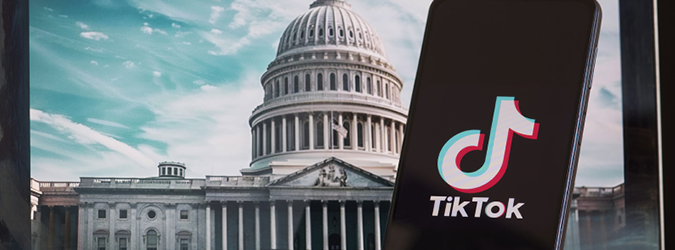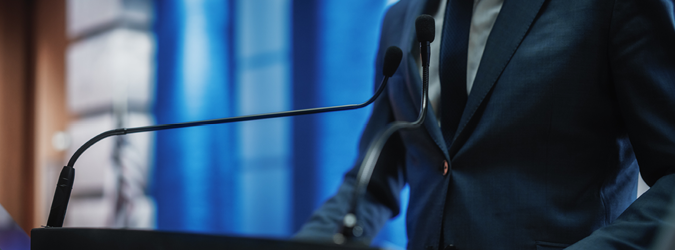Protecting the Press From Prosecutorial Overreach
8.4.2021
The recent disclosure that the Trump administration had secretly subpoenaed the records of journalists and members of Congress has led to the most significant movement to protect confidential sources in years. After President Biden spoke out against the subpoenas, Attorney General Merrick Garland prohibited the Department of Justice from seeking to uncover journalists’ sources in almost all circumstances. Members of both the House and Senate have introduced federal shield law legislation that, if passed, would protect journalists from compelled testimony about their sources and would bring the federal government in line with the vast majority of states that recognize such a reporter’s privilege. For the Fourth Estate, the movement to enhance protections for confidential sources and its benefit to public knowledge is long-awaited and desperately needed.
In May, the public learned that in its last year the Trump Department of Justice had sought – and in significant part obtained – email and phone records of eight journalists from three premier news organizations – the New York Times, CNN and the Washington Post – as part of investigations into the sources of leaks of classified information. The records requests were initially coupled with gag orders issued under the Stored Communications Act that prevented the third-party service providers that held the records (such as Google and Apple) from disclosing the process to anyone, including the news organizations or the journalists themselves. Because the journalists did not know about the subpoenas, they could not challenge them in court.
Then came the disclosure that the Trump DOJ had also sought the records of Congressmen Adam Schiff and Eric Swalwell in 2017 and early 2018 as part of its leak investigation into media reports about contacts between Trump associates and Russia. The broad subpoenas sent to Apple sought records from accounts that belonged to the congressmen’s families, children, and staffers. (Apple claimed that it did not know whose records it was providing; the subpoena sought information on 73 phone numbers and 36 email addresses.) Apple was gagged from telling its clients about the subpoena for three years.
By going directly to the phone and email service providers for the records, and gagging the providers from informing the account holders, the Trump administration led an end-run around the traditional check provided by the judicial system. The government is able to secretly bypass targeted journalists in this way only due to an accident of technology. If news organizations kept their records in file cabinets instead of in the cloud, it would be impossible for the DOJ to seek those records without notice. And prior notice would enable journalists to seek judicial review from an Article III judge, to challenge the government’s purported rationales for seeking the information and the breadth of information sought.
Why does this matter? American history provides ample evidence that the information the press provides to the public – including information originally provided by confidential sources – is vital to the operation of our democracy and the oversight of our most powerful public and private institutions. For example, reporting on Watergate, Enron, Harvey Weinstein, and President Trump’s tax returns, to name just a few award-winning works, was all originally based on information from confidential sources. If there is no assurance that journalists will be able to protect their sources, those with newsworthy information will hesitate to come forward, and the public will be weaker for it. As Justice Black wrote 50 years ago in the Pentagon Papers case: “The press was to serve the governed, not the governors. The Government’s power to censor the press was abolished so that the press would remain forever free to censure the Government. The press was protected so that it could bare the secrets of government and inform the people. Only a free and unrestrained press can effectively expose deception in government.”[1]
Recognizing that that “freedom of the press can be no broader than the freedom of members of the news media to investigate and report the news,”[2] the Department of Justice has long limited when prosecutors could seek journalist records. Its policy was last tightened in 2015, following disclosures in 2013 that the Obama administration had secretly sought several months of office and home phone records of Associated Press reporters and had issued a search warrant for Fox News reporter James Rosen’s records, alleging that Rosen was an “aider, abettor and/or co-conspirator” in a potential violation of the Espionage Act. (The government took this approach specifically to get around the broad prohibition on search warrants for newsrooms and journalists contained in the Privacy Protection Act of 1980. One exception in the PPA is if a journalist is suspected of being involved in the alleged underlying criminal conduct.)
The 2015 revisions clarified that the policy applied to news organizations and their service providers and emphasized that the affected media should receive prior notice of any attempt to access their material, so that they could then challenge the process in court. The policy noted that subpoenas and warrants to the media are “extraordinary” measures and require approval from the attorney general or another senior official. However, the policy also provided an out: the government could choose not to tell the affected media if the attorney general determined that notice would “pose a clear and substantial threat to the integrity of the investigation, risk grave harm to national security, or present an imminent risk of death or serious bodily harm.”[3]
In these most recent leak investigations, the government claimed that it complied with its obligations under the DOJ policy. It is hard to fully credit the government’s argument that disclosure would have threatened the integrity of its investigation, though, as the subpoenas were issued in 2020, sought information from 2017 and, at least in the case of the New York Times, the apparent underlying leak investigation had been public for a year. Moreover, the records sought were being held by a third party, so there was no risk of the Times destroying them. (Full disclosure: I am one of a team of attorneys representing the Times in a motion to unseal the application materials.)
These disclosures of secret government subpoenas have now spurred investigations and spawned a congressional hearing, draft bills, and a new, stricter policy for the Department of Justice. In the immediate wake of the disclosures, President Biden said that seeking to uncover journalists’ confidential sources was “simply, simply wrong” and that he “will not let that happen.” In mid-July, Attorney General Garland issued a policy memorandum that prohibits the Department of Justice from seeking journalists’ sources, in almost all cases in which the journalist is acting within the scope of newsgathering activities. (The new policy does not apply if the journalist is being investigated for activities unrelated to newsgathering or – perhaps in a nod to the prosecution of Julian Assange – if the journalist used “criminal methods” to obtain government information. It also contains limited exceptions for terrorism and imminent bodily harm). Attorney General Garland’s memo makes clear that the government can still try to uncover leaks; it just can’t go to the media for information as to the source.
This policy change has been received with plaudits from the press but also calls to codify the policy legislatively, so that the next attorney general can’t just change it again.
Of course, even if the journalists had been able to go to court to try to quash or limit the subpoenas, they might not have been successful. In 1972, the Supreme Court ruled in Branzburg v. Hayes that there is no absolute right under the First Amendment for a reporter to refuse to testify before a grand jury.[4] Nevertheless, in the years since, many federal courts have recognized some level of protection from forced disclosure, but the varying standards and balancing tests can all be overcome in certain instances.
The federal approach differs from that of the states, which by and large recognize a reporter’s privilege to refuse to testify either grounded in the state’s constitution or in statutory law. New York has one of the strongest statutory shield laws around – it provides an absolute privilege for confidential sources – meaning that a journalist cannot be compelled to disclose confidential source information even to a criminal grand jury. As the Court of Appeals found in its 2013 case Holmes v Winter:
New York public policy provides a mantle of protection for those who gather and report the news – and their confidential sources – that has been recognized as the strongest in the nation. And safeguarding the anonymity of those who provide information in confidence is perhaps the core principle of New York’s journalistic privilege, as is evident from our colonial tradition, the constitutional text and the legislative history of the Shield Law.[5]
In Holmes, the Court of Appeals quashed a subpoena for a Fox news reporter to appear in a Colorado court to testify about her source for a leaked document about the mass murderer James Holmes, noting that Colorado’s balancing test was not as protective as New York’s absolute privilege.
Without a federal shield law, the scope of protection for a confidential source can differ dramatically from state to state or even district to district. For example, if a New York-based reporter receives a subpoena seeking the identity of a confidential source issued out of the New York Supreme Court at 60 Centre Street, the reporter can refuse to comply, relying on New York’s absolute privilege for confidential sources (found in New York Civil Rights Law § 79-h). If, on the other hand, the subpoena comes from 40 Centre Street, the federal courthouse next door, the journalist will face a “qualified” privilege based on common law, meaning that it could be overcome by a compelling government interest. These varying standards make it impossible for a journalist to act with any certainty when dealing with potential sources.
To remedy this, federal shield laws have been proposed before by Republicans and Democrats alike. In 2007, then-Congressman Mike Pence was one of the sponsors of the Free Flow of Information Act, testifying before the House Judiciary Committee that “[c]ompelling reporters to testify and, in particular, compelling them to reveal the identity of their confidential sources is a detriment to the public interest. Without the promise of confidentiality, many important conduits of information about our Government will be shut down.”[6] After months of discussion and negotiation, the act languished. There was another attempt in 2017, but it too went nowhere.
But a federal shield law may now be back on the table. Democratic members of both the House and Senate have introduced almost identical bills that would protect journalists from being compelled to produce their confidential source material. The PRESS Act (“Protect Reporters from Exploitative State Spying” in the House version) would limit any federal entity from compelling the disclosure of confidential sources and other journalist work product and material obtained during newsgathering in almost all circumstances. (There are narrow exceptions for terrorism investigations or to prevent imminent violence or significant injury.) And the protections of the PRESS Act extend to the email, telephone and cloud storage providers for the media as well – unless a court finds “a reasonable threat of imminent violence.” Where subpoenas are permitted, the bills require prior notice and an opportunity to be heard, and that the government informs the court that the information sought belongs to a covered journalist – answering one of the critiques of the recent forays. Only if a court determines by clear and convincing evidence that notice would pose a substantial threat to the integrity of a criminal investigation or risk serious harm can the service provider be gagged from informing their client.[7]
With the previous bills, there were questions over who would qualify for protection: Did citizen journalists count or just those who worked for traditional media? How about bloggers? The PRESS Act defines those who will receive protection broadly – a “covered journalist” is “a person who gathers, prepares, collects, photographs, records, writes, edits, reports, or publishes news or information that concerns local, national, or international events or other matters of public interest for dissemination to the public.” Unlike the 2017 bill, there is no requirement that the journalist be paid for their work.
The PRESS Act does not apply to civil defamation claims, nor to anyone suspected of being an agent of a foreign power or a terrorist. It also does not prevent the government from investigating a journalist suspected of committing a crime, or if the journalist was a witness to a crime unrelated to engaging in reporting.
Congress introduced the PRESS Act the same week that the House Judiciary Committee held a hearing on potential legislative responses to “deter prosecutorial abuse of power,” at which I was a witness. In addition to calling for the codification of the Department of Justice policies and a federal shield law, other proposals for legislative solutions included requiring judicial review for Department of Justice subpoenas; enhancing the standard of review for gag orders issued under the Stored Communications Act; restricting how long parties could be gagged; and providing an advocate for the press in cases where service providers were prohibited from telling journalists about the process.
But these new policies and bills are not yet laws, and much remains to be done to ensure that newsworthy reporting makes its way to the public.
Lynn Oberlander, a leading media attorney and advocate for journalists, is of counsel with Ballard Spahr. She is the previous general counsel at Gizmodo Media Group, First Look Media Works, and The New Yorker. She is the former chair of both the Media Law Resource Center and of the Communications and Media Law Committee of NYSBA. She is a frequent speaker on freedom of expression and media law topics and teaches graduate courses in media law and media ethics at the New School in New York.
[1]. New York Times Co. v. United States, 403 U.S. 713, 717 (1971).
[2]. 28 CFR § 50.10 (a)(1).
[3]. 28 CFR § 50.10 (a)(4).
[4]. 408 U.S. 665 (1972).
[5]. 22 N.Y.3d 300, 316 (2013), cert. denied, 572 U.S. 1135 (2014).
[7]. The text of the act can be found here: https://raskin.house.gov/_cache/files/0/c/0c416d20-4525-4578-bb81-52072342f9e2/893511E622B285B8219155C4BF2957D0.press-act.pdf.






